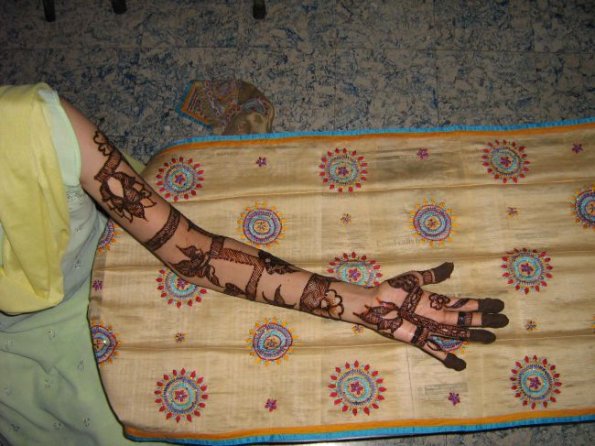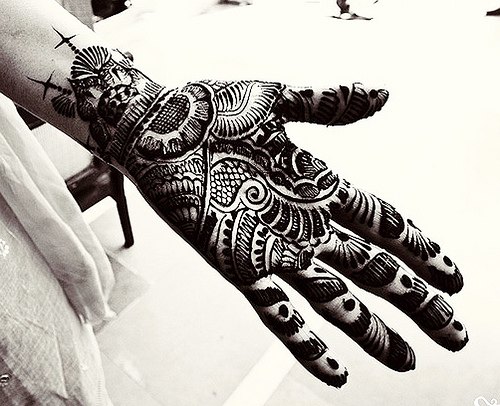Bridal Mehandi Designs For Full Hands (1)Biogarphy Photos Pictures Pics Images
source(google.com.pk)
Henna is native to the Middle East but was spread to many other parts of the world by human interaction. It became an important plant in Muslim religion.
Origins
From its native distribution in Iran to western India, henna spread eastwards to the rest of India and Indonesia, and westwards to the Middle East where it became an important plant in Islam. It later followed Muslim armies and traders from Arabia reaching as far as Spain, Madagascar, the Moluccas, Indo China and Japan. It is now distributed throughout the tropics and subtropics.
The woman in this 19th century carving has henna on her hands.
With centuries of migration and cultural interaction it is difficult to work out where particular traditions began. But, historians claim that henna has been used for at least 5000 years both as a cosmetic and medicine. Some scientists believe that henna use originated in ancient India, while others suggest its use originated in the Middle East and North Africa, and was brought to India in the 12th century by Egyptian Moguls.
The ritual painting and decorating of the human body began in pre-history and henna as a tool for this art was particularly prevalent in the cultures of North Africa and the Middle East. From here it possibly spread to South Asia. Over the centuries it has developed to become an intricate art form rich in symbolism. Known in South Asia as mehndi, it is used to celebrate weddings, circumcisions and births.
In India, the use of henna in the 4th and 5th centuries is illustrated on Bodhisattvas and deities of cave wall murals. It was probably used in India seven centuries before the Mogul invasion, and hundreds of years before Muslim religion began in the middle of the 7th century AD.
The use of henna as a decoration in India took off with the advent of Muslim rule and became common after the 12th century. It further developed under the rule of the Mughals and by the 17th century, various designs had evolved. Besides being an art form, the use of mehndi was valued in the heat of summer as it has cooling properties. It is very popular as a natural colouring agent for the hair, keeping it shiny and glossy but also helping to disguise the greying of hair.
The art of henna decorating is now practiced in some nine religions including Hindu, Sikh, Jewish, Muslim, Christian and Pagan. Traditionally a woman's art, Indian and Pakistani henna designs are intricate. Intricate patterns are made to decorate a bride, in a ritual a day before the wedding called the mehndi ceremony.
It is now a common household name in both South Asia and Europe, with many people seeing henna as part of their lives either to dye their hair, or tattoo their skin.
Bridal Mehandi Designs For Full Hands (1)Photos Pictures Pics Images
Bridal Mehandi Designs For Full Hands (1)Photos Pictures Pics Images
Bridal Mehandi Designs For Full Hands (1)Photos Pictures Pics Images
Bridal Mehandi Designs For Full Hands (1)Photos Pictures Pics Images
Bridal Mehandi Designs For Full Hands (1)Photos Pictures Pics Images
Bridal Mehandi Designs For Full Hands (1)Photos Pictures Pics Images
Bridal Mehandi Designs For Full Hands (1)Photos Pictures Pics Images
Bridal Mehandi Designs For Full Hands (1)Photos Pictures Pics Images
Bridal Mehandi Designs For Full Hands (1)Photos Pictures Pics Images
Bridal Mehandi Designs For Full Hands (1)Photos Pictures Pics Images
Bridal Mehandi Designs For Full Hands (1)Photos Pictures Pics Images
Bridal Mehandi Designs For Full Hands (1)Photos Pictures Pics Images












No comments:
Post a Comment